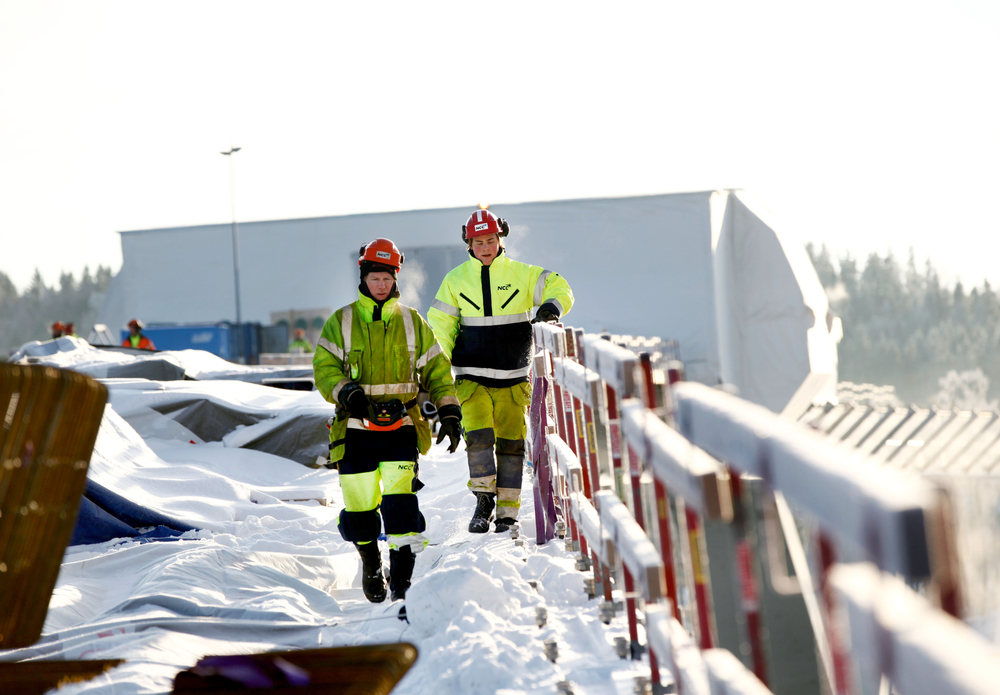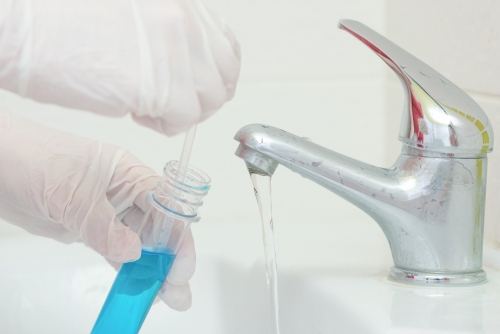Making sure your business is a safe place for people to work, shop, or visit is essential. Whether you’re a public-facing high-street retailer, a factory with a growing workforce or your clients are visiting your offices in an industrial estate, there are many hazards you should be looking out for.
Slip and trip accidents increase during the Autumn and Winter season for a number of reasons: there is less daylight, leaves fall onto paths and become wet and slippery and cold weather spells cause ice and snow to build up on paths. There are effective actions that you can take to reduce the risk of a slip or trip. Regardless of the size of your site, always ensure that regularly used walkways are promptly tackled.
Carry out a risk assessment – Under the Management of Health and Safety at Work Regulations 1999, a risk assessment is a legal requirement that involves identifying sensible measures to control hazards if you’re an employer, your work activity is mentioned in the regulations, or your work poses a risk to others.
Identify hazards outside your business – These are mainly the result of wet and icy weather. Places where hazards could occur include Company car park and its adjoining road, Pavement or pathways etc
Identify hazards inside your business – These can mainly be the result of darker days and colder temperatures. Places where hazards could happen include the entrance areas of your business, dark warehouses, unlit corridors or stairwells for example.
What else can you do to ensure safety in winter?
Lighting
Is there is enough lighting around your workplace for you and your workers to be able to see and avoid hazards that might be on the ground? The easiest way to find out is to ask your employees.
Wet and decaying leaves
Fallen leaves that become wet or have started to decay can create slip risks in two ways, they hide any hazard that may be on the path or they themselves create a slip risk.
Put in place a procedure for removing leaves at regular intervals; you might even consider removing the offending bushes or trees altogether.
Rain water
In dealing with rainwater:
- When fitting external paved areas ensure that the material used will be slip resistant when wet.
- Discourage people from taking shortcuts over grass or dirt which are likely to become slippery when wet. Consider converting existing shortcuts into proper paths.
- On new sites, before laying paths, think about how pedestrians are likely to move around the site. Putting the path in the right place from the start may save you money in the long term.
- Many slip accidents happen at building entrances as people entering the building walk in rainwater. Fitting canopies of a good size over building entrances and in the right position can help to prevent this.
- If a canopy is not a possibility, consider installing large, absorbent mats or even changing the entrance flooring to one which is non-slip.
Ice, frost and snow
- To reduce the risk of slips on ice, frost or snow, you need to assess the risk and put in a system to manage it.
- Identify the outdoor areas used by pedestrians most likely to be affected by ice, for example: – building entrances, car parks, pedestrian walkways, shortcuts, sloped areas and areas constantly in the shade or wet.
- Monitor the temperature, as prevention is key.
- You need to take action whenever freezing temperatures are forecast. Keep up to date by visiting a weather service site such as the Met Office or the Highways England.
- There are also smart signs on the market, available to buy at low cost, which display warning messages at 50 and below.
- Put a procedure in place to prevent an icy surface forming and/or keep pedestrians off the slippery surface;
- Use grit (see separate article below for more detail) or similar, on areas prone to be slippery in frosty, icy conditions;
- Consider covering walkways eg by an arbour high enough for people to walk through, or use an insulating material on smaller areas overnight;
- Divert pedestrians to less slippery walkways and barrier off existing ones.
- If warning cones are used, remember to remove them once the hazard has passed or they will eventually be ignored.
Gritting
The most common method used to de-ice floors is gritting as it is relatively cheap, quick to apply and easy to spread. Rock salt (plain and treated) is the most commonly used ‘grit’. It is the substance used on public roads by the highways authority.
Salt can stop ice forming and cause existing ice or snow to melt. It is most effective when it is ground down, but this will take far longer on pedestrian areas than on roads.
Gritting should be carried out when frost, ice or snow is forecast or when walkways are likely to be damp or wet and the floor temperatures are at, or below freezing. The best times are early in evening before the frost settles and/or early in the morning before employees arrive. Salt doesn’t work instantly; it needs sufficient time to dissolve into the moisture on the floor.
If you grit when it is raining heavily the salt will be washed away, causing a problem if the rain then turns to snow. Compacted snow, which turns to ice, is difficult to treat effectively with grit. Be aware that ‘dawn frost’ can occur on dry surfaces, when early morning dew forms and freezes on impact with the cold surface. It can be difficult to predict when or where this condition will occur.
Sources https://www.fsb.org.uk/resources-page/a-guide-to-health-and-safety-during-winter.html https://www.hse.gov.uk/logistics/slips-trips-bad-weather.htm
Get in touch:
Contact our friendly team of experts to find out more or get advice on health & safety.














